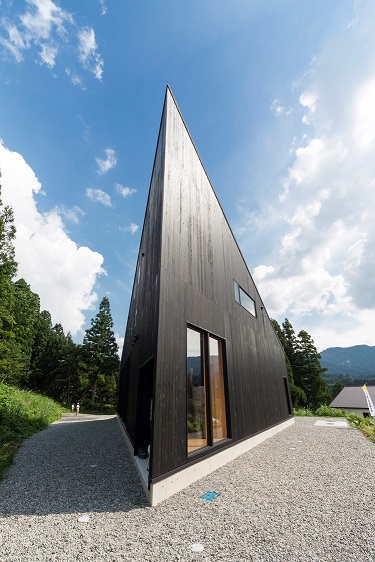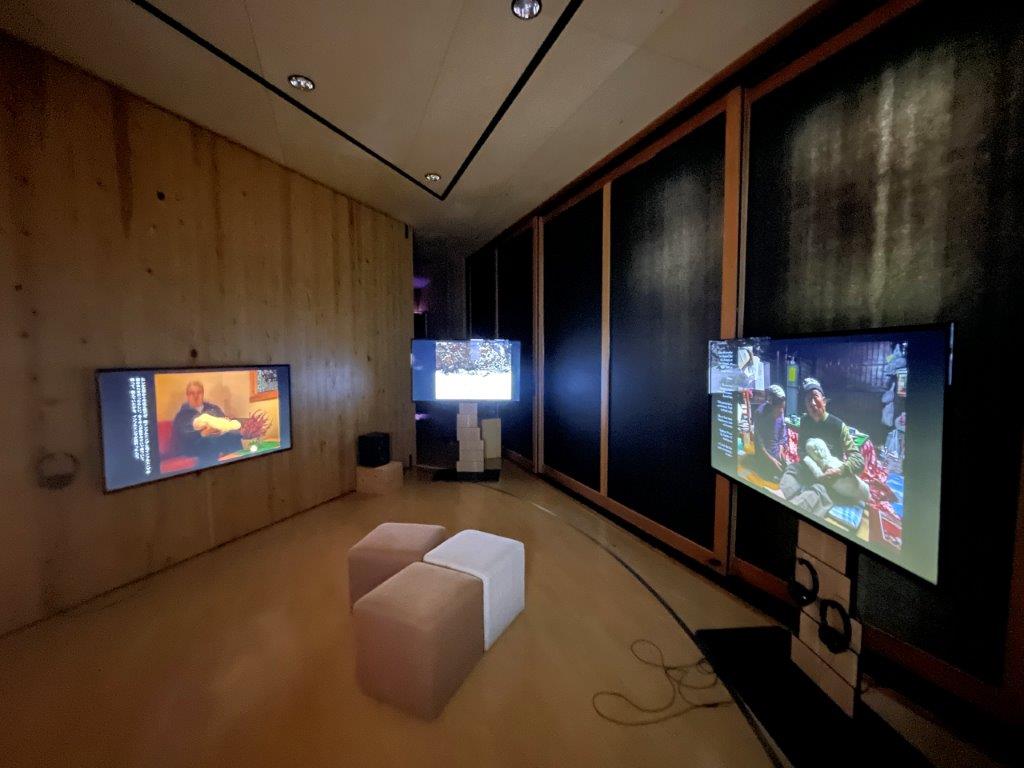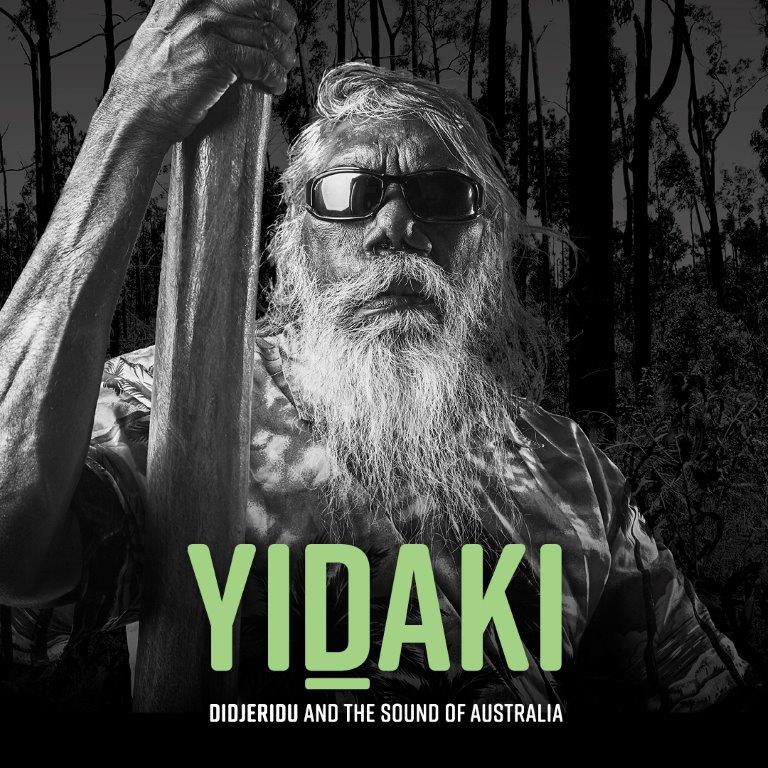-
Australia House
-
The Echigo-Tsumari and Australia
-
Artist-in-Residence profiles and Activities at Australia House
Australia House
 The concept for Australia House was born in 2009 as part of the fourth Echigo-Tsumari Art Triennale, and is located in the mountainous Echigo-Tsumari region. It has been a base for cultural exchange between Australia and Japan since then.
The concept for Australia House was born in 2009 as part of the fourth Echigo-Tsumari Art Triennale, and is located in the mountainous Echigo-Tsumari region. It has been a base for cultural exchange between Australia and Japan since then.
The original Australia House collapsed during the Northern Nagano Prefecture Earthquake in March 2011. It was decided, with Japanese and Australian support, that the House would be rebuilt. The Australia House Reconstruction Project was launched soon after the disaster. It was the result of many people's determination to continue the close relationship between Australia and the Echigo-Tsumari region.
A scenic site in Urada, Tokamachi City, Niigata prefecture, was chosen as the site for the new Australia House. Based on the concept of 'reasonable, robust and small' hazard-resistant construction, an international competition for the building's design chaired by internationally renowned Japanese architect Tadao Ando was launched in September 2011.
From a total of 154 entries from Australian and Japanese architects, a design proposal by Sydney architect Andrew Burns was chosen as the winner. The design takes into consideration environmental sustainability and natural disaster-prevention and reflects a merging of Japanese and Australian culture.
The current Australia House - a symbol of recovery from the Great East Japan Earthquake and tsunami - was rebuilt with the support of the Tokamachi City Government, the Australia-Japan Foundation, International Culture Appreciation and Interchange Society, Inc., the Australian Embassy Tokyo, and local residents. The building is a structure that creates potentialities for art installation, both internally and within the immediate surroundings. The internal spaces are calibrated to amplify the experience of landscape. Perception of the building alternates between the dynamic appearance of an art object and the familiar presence of a rural dwelling. The roof rises steeply to the daikokubashira, which becomes a charged element within the gallery space. The triangular form creates a long dimension and widening perspective within compact space. Australia House opened in July 2012 for the 5th Echigo-Tsumari Art Triennale.
It served as one of the main attractions of the Echigo-Tsumari Art Triennale 2012, and received the 2013 Jørn Utzon Award for International Architecture. Australian First Nations artist and the Artistic Director of the 2020 Biennale of Sydney, Brook Andrew’s “dhirrayn ngurang-Mountain Home” has been permanently installed.
Australia House aims to be a focus of cultural exchange between Australia and Japan and a place where Japanese people can learn about multicultural Australia. It is a centre for artistic and cultural residency, as well the production and exhibition by Australian artists and students. At particular times of the season, it is available for visitors as an accommodation.
For information about events held at Australia House, please visit the Echigo-Tsumari Art Field website or Australia House’s Facebook page.
The Echigo-Tsumari and Australia
The Echigo-Tsumari Art Triennale is one of the largest art festivals in the world and has been held once every three years in the Echigo-Tsumari region since 2000. Australia has participated in the festival since the beginning and has thus established a close relationship with the Echigo-Tsumari region.
The theme of the ETAT is ‘human beings are a part of nature’, which is a concept that many Australians can relate to. The scenery of the mountainous Echigo-Tsumari region is vastly different to that of Australia, experiencing some of the heaviest snowfalls in winter and transforming into a rich green landscape in summer. However, the Echigo-Tsumari way of living, where people learned to coexist with the harsh natural environment by passing on customs and traditions from generation to generation, is similar to that of Australia where Indigenous people have been living for more than 60,000 years.
Artist-in-Residence profiles and Activities at Australia House
Our Artists-in-Residence program sees Australian artists and curators stay at Australia House while being inspired by the local nature, culture and customs. The artists create artworks, conduct presentations and workshops and contribute to building stronger links and networks between the arts and culture communities of Australia and Japan.
2024
The ninth ETAT
-
Lauren Berkowitz "Residual Matter"
2023
-
Marty Hicks, Marty Holubek and Kei Matsumaru, Australia House recording project
2022
The eighth ETAT
-
Elena Knox "Protective Seal" at Australia House

-
Janet Laurence "Museum of Waters"
-
【Hossein Valamanesh】Echigo-Tsumari Art Triennale 2000-2022 Memorial Exhibition Series
-Artists Still Alive in Echigo-Tsumari
2019
-
Elena Knox, Artist-in-Residency
2018
The seventh ETAT
-
Hossein Valamanesh and Angela Valamanesh, Artist-in-Residency and permanent installation works, "Guardian" and "You are here", Tokamachi Samue
-
Yidaki: Didjeridu and the Sound of Australia exhibition at Nobutai
The National Museum of Australia and South Australian Museum toured this exhibition, built around the rhythm and song of yidaki (the instrument also known as ‘didjeridu’), to Echigo-Tsumari as part of DFAT’s Australia now 2018 celebrations. Developed in close collaboration with the traditional owners of the Yidaki, the Yolngu people of Arnhem Land in northern Australia, this groundbreaking project has become the first major exploration of this musical emblem of Australia.
Didjeridu is the iconic sound of Australia, an instrument played by many Aboriginal people and others around the world. It is both a symbol of Aboriginal culture, and the most famous instrument in the expanding traditions of global ‘world music’.
YIDAKI in concert feat. Djalu Gurruwiwi & GOMA event

-
Sue Pedley + Kazuya Iwaki + Tokyo Denki University Iwaki Laboratory "Tracing Water"
2017
-
Liam Mugavin, Artist-in-Residency
-
Jia-Wei Zhu, Artist-in-Residency
2016
-
Wendy Teakel, Artist-in-Residency
-
Curtis Taylor, Mervyn Street and John Nargoodah participated in an event at the Echigo-Tsumari Art Field with Dr Michael Pickering of the National Museum of Australia
2015
The sixth ETAT
-
SNUFF PUPPETS (Andy Freer, Nik Wilson, Stephane Hisler and Rosalind Hall), Artists-in-Residency and performance "Giant Puppets of Echigo-Tsumari"
Working with the local residents, a regional farming community, Snuff Puppets, Australia’s leading giant puppet experimental theatre company, created a giant puppet show based on local traditions and Obon festival customs.
-
Yiwarra Kuju: Canning Stock Route collection at Australia House
2013-2015
-
Heidi Axelsen, Hugo Moline and Nathan Hawkes "2000 Waraji 200 Feet"
2012
The fifth ETAT
Australia House reconstructed.
-
Andrew Burns with Souhei Imamura, Sotaro Yamamoto "Australia House"
-
Brook Andrew "Mountain Home – Dhirrayn Ngurang"
Brook completed a dazzling installation of neon, mirror and glass that can be hidden inside the walls of Australia House. The concept of this hidden panel was developed in conversation with Australia House architect, Andrew Burns, and signals the extremities of the Echigo seasons. The work reflects the world outside, with visitors included within its reflective environment. The neon based text is inspired by interviews with members of the Urada community: See the snow and jade river / see the mountain ancestors / see me with clarity / see my children / see my struggle / drink tea with me
Dhirrayn Ngurang appeals to visitors to sit and drink tea with locals, see their interests, unique lives and histories. The pattern of dhirrayn ngurang is inspired by the artist’s Wiradjuri heritage and tradition. Dhirrayn ngurang is a contemporary interpretation of their cultural marker (radial diamond patterns carved into shields and marked trees for warfare and ceremony) and is likewise a space for reflection, mediation, ceremony and performance.

-
Andrew Rewald "The Feeling of Homeland"
Andrew completed an art project for the 2012 Echigo Tsumari Art Triennale that considered the significance of both change and tradition through local rituals of gathering food, cooking and communal eating. Andrew worked in collaboration with people from Urada and the greater Matsunoyama area to develop a performance event for Obon festival (Japanese ancestor festival) that activates food as a medium for the enduring act of remembering. Based on the understanding that food habits represent a time, a place and its people, Andrew worked with recipes that refer to tradition while acknowledging current social concerns.
-
Jeremy Bakker, Ross Coulter and Angela Pye "The Space Between Our Hands" at the Snow Art Project
Jeremy, Ross and curator Angela participated in the Artist-in-Residence program in 2012, displaying their work The Space Between Our Hands at the Snow Art Project in Echigo-Tsumari. The work aimed to represent the community, through snow impressions formed by clasping the hands together. Like the face, the hands tell a story and form a portrait of an individual.
The elderly people of the community shared their memories of snow; that of wonder, lightness, beauty and fun as children, and something heavier and burdensome as adults. The snow impressions came to speak of the community’s connection with nature, and became a means to reignite the initial sense of wonder and joy that was once associated with snow.
The impressions were displayed in a room that was dug 3m deep into the snow, and was entered through a snow enclosed tunnel. The installation plan was inspired by a Japanese ima (living room) and featured cavities dug into each wall to display the impressions collected over the period of the residency.
2011
-
Kim Andersen Skin
2010
-
Japan Australia Art Musings
The JAAM (Japan Australia Art Musings) project was an Artists-in-Residence program between Australia and Japan, which took place at Australia House from 9-31 August, as part of the Echigo-Tsumari Festival of the Earth 2010.
Six art students from the University of Newcastle (Fiona Less, Mandy Francis and Nerida Ackland) and Tama Art University (Hitomi Fukui, Keichi Chigasaki and Saeko Shimojo) lived together as they created exceptional artworks around the themes of the Urada Area and Australia House. The six artists provided unique exhibitions reflecting different interpretations, concepts and use of materials. The artists also interacted proactively with the local Urada community through workshops and presentations.
The artworks were exhibited at the Gallery of the University of Newcastle in Australia.
-
Maude Bath Double Image: A Fiction of Two Culture
In 2010, Maude Bath, accompanied by Chris Tugwell, took up the position as Artist-in-Residence to produce the exhibit Double Image: a Fiction of Two Cultures. The exhibition displayed artworks made from felt during the residency. The felt was made from welding Japanese silk with Australian Merino Wool. During the residency program Maude shared this contemporary art form with the Japanese community by holding eight felting workshops with locals.
The exhibition was held at Urada Kokusetsu Kanri Centre. They were also later displayed at the T’Arts Collective in Adelaide and the International Felt-making Convergence in Western Australia. One of the works was then returned to Urada as a gift to the community.
2009
The fifth ETAT
The original Australia House was established.
-
Lucy Bleach "Oral Fibre"
-
Alex Rizkalla "Japan Kunstkammer"
-
Richard Thomas "OIKOS"

-
Dadang Christanto "Cakra Kul-Kul at Tsumari"
2006
The third ETAT
-
Anne Graham "Fishing House"
-
Dadang Christanto "Cakra Kul-Kul at Tsumari"
-
Sue Pedley "HAZE"
-
Ben Morieson "Burnout 2006-Radio Controlled in Echigo-Tsumari"
2003
The second ETAT
-
Anne Graham "Snake Path"

-
Nigel Helyer "Everything is Nice with American Rice"
-
Janet Laurence "Elixir"
-
Lauren Berkowitz "Harvest House"
-
Robyn Backen "Rice Talk"
-
"Spirit Country: Contemporary Australian Aboriginal Art" Exhibited at Echigo-Matsunoyama Museum of Natural Science
2000
The first ETAT
-
Fiona Foley "Dharma Eye"
-
Anne Graham
-
Hossein Valamanesh "In Memory of Snow"

